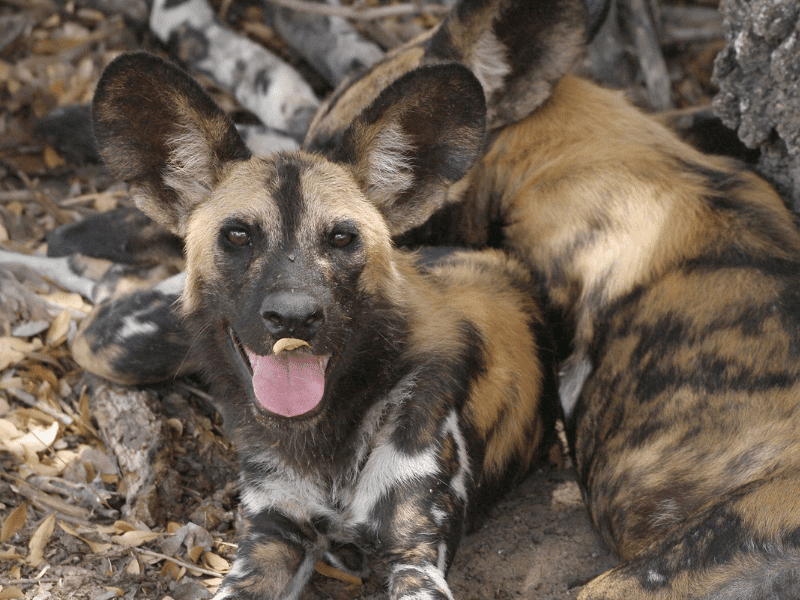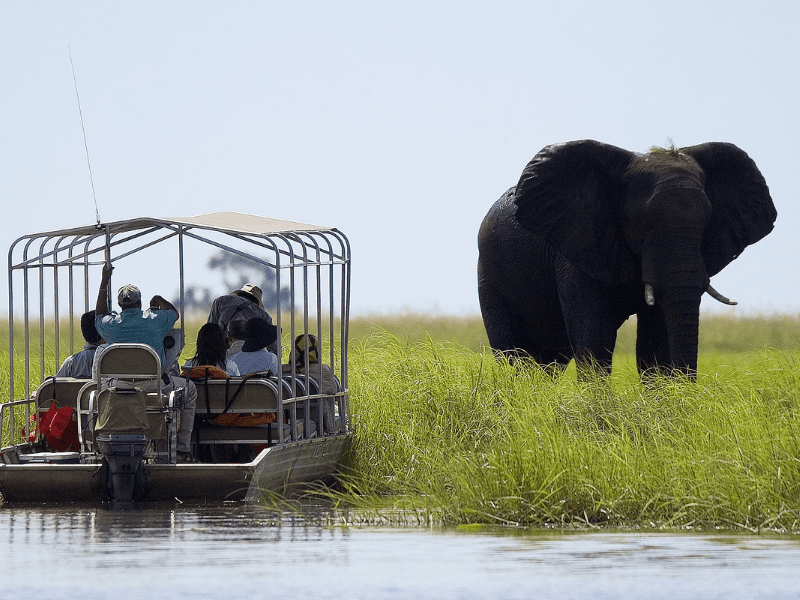Botswana



Introduction
Dominated by the parched Kalahari Desert, the contrasting landscapes and immense biodiversity of Botswana make this a country renowned for offering some of the best wildlife areas on the African continent. With a large portion of its total land devoted to national parks, reserves and wildlife areas – for the most part unfenced, allowing animals to roam wild and free – travellers may well sense they are moving through an endless natural wonderland.
Botswana serves up a feast of natural treasures, from the prolific, world renowned Chobe National Park, to the peaceful isolation of the Makgadikgadi and Nxai pans. The immense Okavango Delta fans out across the north-western corner to create a paradise of islands, lagoons and waterways teeming with bird and wildlife. For a complete Botswana experience, we recommend a ‘land and water camp’ combination, with game viewing on foot, by mokoro or boat, or in a 4×4 safari vehicle.
Visitors here will be left with lasting impressions of vast wilderness stretching from horizon to horizon, astoundingly rich game and bird viewing, tales and ruins of ancient civilisations, night skies littered with countless stars, and stunning sunsets for that perfect photo memory. We invite you to be charmed by the people of Botswana, their rich cultural heritage, and perhaps Botswana’s great gift – its ability to bring us close to Mother Nature.
Chobe National Park
Established in 1968, the Chobe National Park covers approximately 11,700 square kilometres, encompassing floodplains, swamps and woodlands. The Chobe River forms its northern boundary. Undoubtedly one of Africa’s most beautiful rivers, the Chobe supports a diversity and concentration of wildlife unparalleled anywhere else in the country.
The most accessible and frequently visited of Botswana’s big game country, Chobe is most famous for its large herds of elephant and Cape buffalo, which during the dry winter months converge upon the river to drink. During this season, on an afternoon game drive, you may see hundreds of elephant at one time. You may be surrounded by elephants as the main Serondella road becomes impassable and scores of family herds cross the main road to make their way to the river to drink, bathe and play.
Driving the loops that hug the river’s edge you may see up to 15 different species of animals on any game drive, including waterbuck, lechwe, puku (this is the only part of Botswana where they can be seen), giraffe, kudu, roan and sable, impala, warthog, bushbuck, monkeys and baboons, along with accompanying predators such as lion, leopard, hyena and jackal.
Take a river cruise and you’ll experience the park, and the animals, from a different vantage point. Here you’ll get up close and personal with hippo, crocodile and a mind-boggling array of water birds. Over 460 bird species have been recorded in the park, making it one of Africa’s premier venues for bird safaris. Common species to be seen include the sacred ibis, Egyptian geese, the ubiquitous cormorants and darters, Spur-winged geese, Pel’s fishing owl, carmine bee-eaters, most members of the kingfisher family, all the rollers, the unmistakable fish eagle, the marital eagle, and many members of the stork family.
Linyathi, Selinda & Kwando
Sandwiched between the Chobe National Park to the east and the Okavango to the south, the extensive Kwando, Selinda and Linyanti concessions offer superb wildlife viewing – and terrain to rival the physical beauty of the Okavango.
This is real African big game country, and during the dry season the permanent waters of both the Kwando and Linyanti Rivers serves as important migration points for wildlife from much of northern Botswana – including large herds of buffalo and elephant, wildebeest and zebra. Virtually all naturally occurring antelope and predators can be seen in these concessions, depending of course on the season, and food and water availability. These include waterbuck, reedbuck, giraffe, impala, kudu and with luck the rare and shy sitatunga, and accompanying lion, hyena, leopard, cheetah, jackal, serval and caracal.
But perhaps the greatest attraction of this part of Botswana is the feeling it gives of extreme isolation, and being completely removed from the world as we know it. The camps are small and private, with perhaps only twenty or so guests present at one time. There’s nothing else out there – except you, the bush and a fascinating contingent of wild animals just waiting to be discovered.
Moremi Game Reserve
Moremi Game Reserve is the first reserve in Africa that was established by local residents. Concerned about the rapid depletion of wildlife in their ancestral lands – due to uncontrolled hunting and cattle encroachment – the Batawana people of Ngamiland, under the leadership of the deceased Chief Moremi III’s wife, Mrs Moremi, took the bold initiative to proclaim Moremi a game reserve in 1963. It is the only officially protected area of the Okavango Delta, and as such holds tremendous scientific, environmental and conservation importance.
It is situated in the central and eastern areas of the Okavango, and includes the Moremi Tongue and Chief’s Island, boasting one of the richest and most diverse ecosystems on the continent. This makes for spectacular game viewing and bird watching, including all major naturally occurring herbivore and carnivore species in the region, and over 400 species of birds, many migratory and some endangered. Both black and white rhino have recently been re-introduced, now making the reserve a “Big Five” destination.
Contained within an area of approximately 3,900 square kilometres, here land and Delta meet to create an exceedingly picturesque preserve of floodplains – either seasonally or perennially wet, waterways, lagoons, pools, pans, grasslands and riparian, riverine and mopane forests. This terrain makes driving Moremi’s many loops and trails both delightful and, at times, totally inspiring.
The Okavango Delta
A journey to the Okavango Delta – deep into Africa’s untouched interior – is like no other. Moving from wetland to dryland – traversing the meandering palm and papyrus fringed waterways, passing palm-fringed islands, and thick woodland, resplendent with lush vegetation, and rich in wildlife – reveals the many facets of this unique ecosystem.
The Okavango Delta is situated deep within the Kalahari Basin, and is often referred to as the “jewel” of the Kalahari. That the Okavango exists at all seems remarkable. Shaped like a fan, the Delta is fed by the Okavango River, the third largest in southern Africa. It has been steadily developed over the millennia by millions of tonnes of sand carried down the river from Angola.
Major species to be seen include elephant, buffalo, giraffe, zebra, hippo, crocodile, rhino, red lechwe, waterbuck, reedbuck, duiker, impala, kudu, steenbok, wildebeest, hartebeest, sable, roan, tsessebe, lion, leopard, cheetah, genet, serval, and caracal along with an immense variety of birds – land and water, resident and migratory, some of which are rare and endangered. It should be noted, however, that game viewing very much depends on season, and water and food availability.
